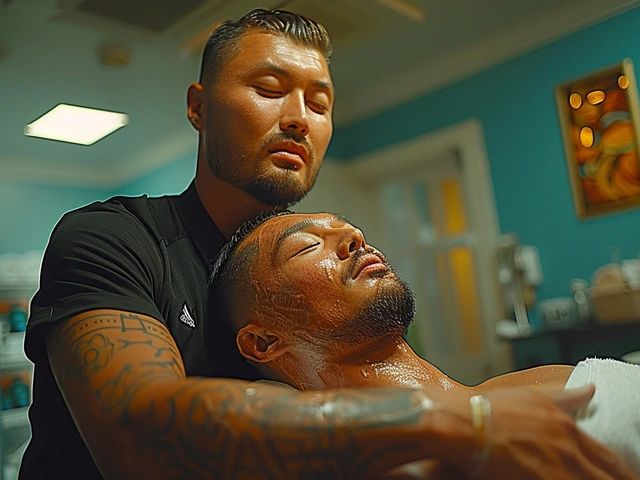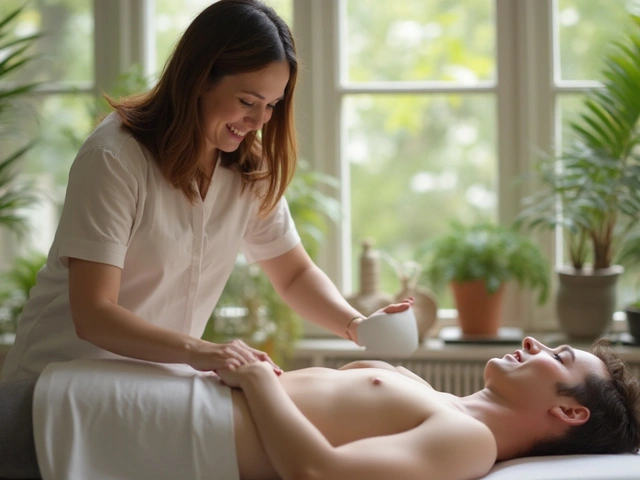Massage Techniques: Practical Methods for Faster Recovery and Calmer Pets
A 10–15 minute massage after activity can cut soreness and speed recovery—yes, that quick. Whether you want to help your own tight shoulders or soothe a nervous dog, simple, consistent techniques beat fancy gadgets. Here are clear, usable methods you can start today.
Core Techniques You Can Use Right Now
Start with effleurage: long, gentle strokes that warm tissue and move fluid. For humans, use flat palms and glide from limbs toward the heart. For dogs, follow the hair direction with light pressure and watch their body language—soft eyes and relaxed breathing mean good. Next, use petrissage: gentle kneading to break up tight muscle bundles. Pick small areas and work in short bursts, asking yourself whether the pressure feels relieving, not painful.
Want targeted relief? Try trigger-point work (neuromuscular style): apply steady pressure to a tender spot for 10–20 seconds until it eases, then release. Use your thumb or knuckle for humans; use a fingertip or the pad of your hand for a small dog. Avoid aggressive poking—if the area flinches or the dog pulls away, back off and try gentler strokes.
For deeper tightness, myofascial release is a slow, sustained stretch of the connective tissue. Hold a tight spot gently and wait for a softening, usually 30–90 seconds. This helps range of motion without jolting pain. Combine with light movement after release to test improvement.
Quick 5–Minute Routine: Humans and Dogs
1) Warm-up: 1 minute of effleurage over the target area. 2) Knead: 1–2 minutes of petrissage, small circles. 3) Trigger check: 30 seconds per spot if you find a knot. 4) Finish: 1 minute of light stroking and calm breathing. For dogs, keep voices low and reward with a treat if they stay calm.
Pressure matters. Use firmer pressure on large muscles like quads and shoulders, and very light touch near the spine, abdomen, or bones. When working with dogs, avoid the belly on unfamiliar pets and never press over recent surgical sites or obvious lumps.
Frequency depends on the goal: daily light massage helps relaxation and anxiety; 2–3 times weekly works well for recovery during training; deep work should wait 48–72 hours between sessions. Listen to the body—soreness that improves over 24 hours is normal; sharp pain or swelling is not.
When to see a professional? If pain is sudden, linked to injury, or not improving after a few sessions, get a vet for pets or a licensed therapist for people. Professionals can combine massage with exercises, stretching, and targeted rehab plans for better, safer results.
Small tools help but aren’t required. A tennis ball for self-myofascial release, a soft brush for calming a dog, or a warm towel for pre-massage can make sessions more effective. Keep sessions short, consistent, and focused on comfort. You’ll get more benefit from regular, mindful touch than from occasional long sessions.
Start simple, watch reactions, and build a short routine you actually use. Massage techniques are practical tools—use them smartly and they’ll make movement easier and life calmer for you and your dog.

Creole Bamboo Massage: A Comprehensive Guide for Beginners
Hi there, allow me introduce you to the world of Creole Bamboo Massage through this comprehensive guide, especially tailored for beginners. Dive into this holistic approach to physical wellness and relaxation that hails from ancient cultures. With my expertise, you will learn the fundamentals of this unique massage technique, its health benefits and the ways in which you can integrate it into your personal wellness regimen. My aim with this post is to help you uncover a new way to maximize your health and well-being. Trust me, once you experience Creole Bamboo Massage, nothing else will quite compare.

Getting to Know Amma Massage: A Complete Guide
Hello beautiful souls! I've crafted a comprehensive guide just for you, featuring Amma massage - a therapy that traces back to traditional Asian techniques. In this post, you'll explore the historical depth of Amma massage, unveiling its health benefits and discovering how this holistic approach can rebalance your body's energy. Whether you're a seasoned wellness enthusiast or a beginner curious about holistic therapies, this insightful guide has you covered!




